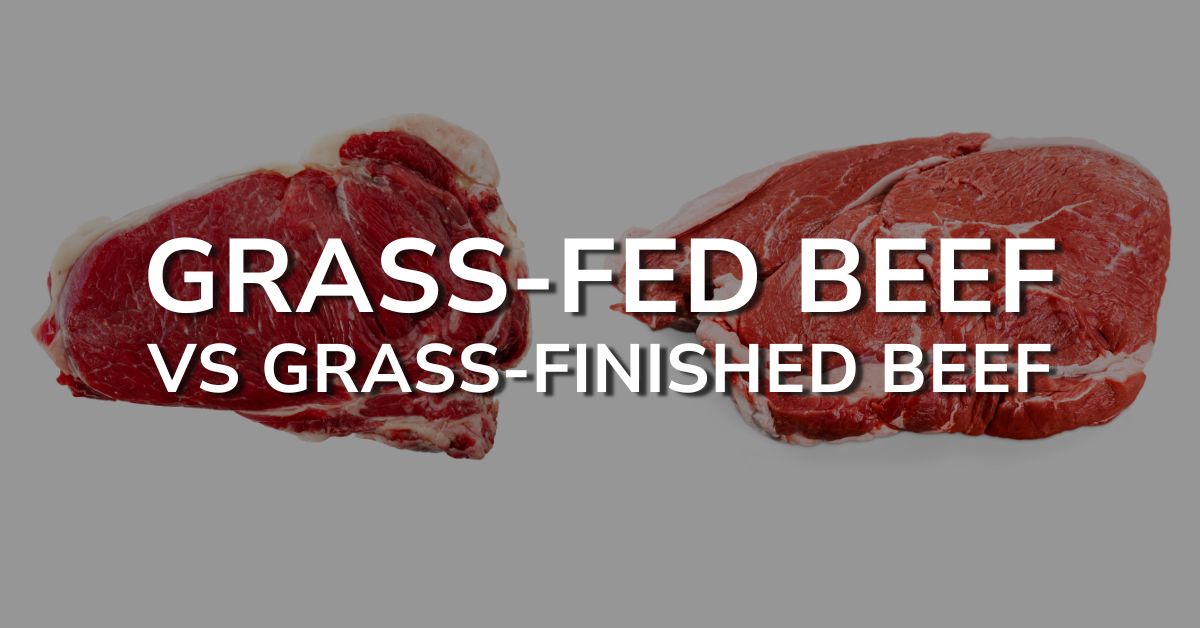In the realm of holistic health and wellness, the food we eat plays a pivotal role. Among the many choices we face at the grocery store, the decision between grass-fed and grass-finished beef is increasingly common. Both options are often celebrated for their health benefits and environmental perks, but what truly sets them apart? Let’s dive into the nitty-gritty of grass-fed vs. grass-finished beef and how your choice can impact your health and the planet.
Understanding the Basics
Grass-Fed Beef: This term generally means that the cattle were fed a diet primarily of grass throughout their lives. However, it doesn’t guarantee that they were fed grass exclusively. In some cases, these cattle may have been switched to grains or other feed towards the end of their lives to increase weight and marbling.
Grass-Finished Beef: Grass-finished beef, on the other hand, comes from cattle that have eaten nothing but grass and foraged foods for their entire life. This distinction is crucial because it impacts the nutritional profile and environmental impact of the beef.
Nutritional Showdown
There’s a growing body of evidence suggesting that the diet of cattle can significantly affect the nutrients found in the beef. A 2010 study published in the Nutrition Journal found that grass-fed beef tends to be lower in total fat but higher in key nutrients like omega-3 fatty acids, which are beneficial for heart health, and conjugated linoleic acid (CLA), known for its potential anti-cancer properties.
Additionally, grass-finished beef often contains higher levels of antioxidants, vitamins, and minerals. A 2012 study published in Meat Science indicated that these cattle have higher levels of Vitamin E and beta-carotene, which are important for immune function and overall health.
Environmental Implications
The debate over grass-fed vs. grass-finished beef isn’t just about health; it’s also about environmental sustainability. Grass-fed and finished beef is often touted as being more environmentally friendly. This claim is backed by the idea that pasture-raised cattle contribute to biodiversity and healthier ecosystems. According to a report by the Journal of Cleaner Production, well-managed grazing systems can improve soil health and increase carbon sequestration.
Taste and Texture
For many, the choice comes down to taste and texture. Grass-fed and finished beef is often leaner and has a different flavor profile than grain-fed beef. Some people describe it as more ‘gamey’ or ‘earthy’. It’s a distinct taste that can be an acquired preference for those accustomed to grain-fed beef.
Price and Accessibility
It’s important to note that grass-fed and finished beef usually comes with a higher price tag. This is due to the longer time it takes for cattle to reach market weight and the more land-intensive nature of raising cattle entirely on pasture. However, many consumers find the health and environmental benefits worth the extra cost.
Making the Right Choice for You
Ultimately, whether you opt for grass-fed or grass-finished beef depends on your personal priorities, be they nutritional, environmental, or based on taste. Both are healthier and more sustainable options compared to conventional grain-fed beef.
Conclusion
References
- Daley, C. A., Abbott, A., Doyle, P. S., Nader, G. A., & Larson, S. (2010). A review of fatty acid profiles and antioxidant content in grass-fed and grain-fed beef. Nutrition Journal, 9, 10.
- Descalzo, A. M., & Sancho, A. M. (2012). A review of natural antioxidants and their effects on oxidative status, odor and quality of fresh beef produced in Argentina
- Vitamin E and beta-carotene status of dairy cows: a survey of plasma levels and supplementation practices


It is not possible to become uncircumcised, as circumcision is a surgical procedure that removes the foreskin from the penis.
It can help you to increase interest in intercourse with your partner but if you take treatment of cheap quality then it will not show its real
work.